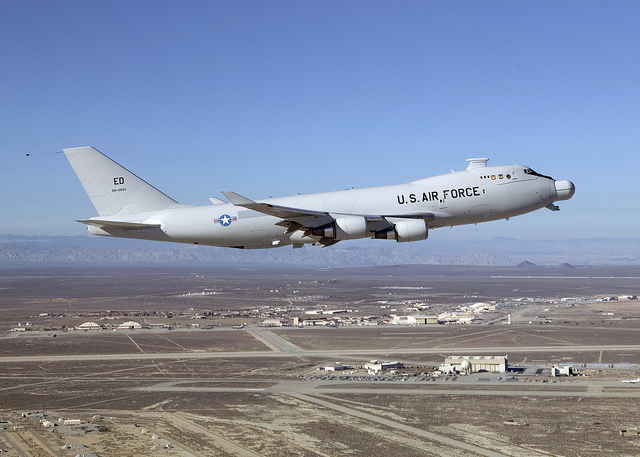
In its mark-up of the Defense Authorization bill for Fiscal 2013, the Strategic Forces Subcommittee of the House Armed Services Committee lauded the prior accomplishments of the Airborne Laser Test Bed program. It then went further by directing the Missile Defense Agency to provide a report by 31 July 2012 on the costs that would be involved in returning the Airborne Laser aircraft to an operational readiness status to continue technology development and testing, and to be ready to deploy in an operational contingency, if needed, to respond to rapidly developing threats from North Korea.
This Airborne Laser program, instituted in 1996, envisioned mounting a chemical laser in a modified Boeing 747-400F aircraft to destroy enemy missiles in their boost phase before they could deploy their nuclear weapons and countermeasures. After spending about $5.2 billion on the program over 16 years, the Missile Defense Agency announced its termination in February 2012, and advised that the modified aircraft would be mothballed and retired to the aircraft bone yard in Arizona. Lt. General Patrick O’Reilly, Director of the Missile Defense Agency, noted that a new generation of smaller and far more powerful unmanned solid-state lasers, capable of operating at higher altitudes, would be developed over the decade in the hope of creating an operationally effective anti-missile laser program.
A basic problem with the Airborne Laser is that the effective range of the weapon is limited by the attenuation of the beam as it passes through the atmosphere. During a House Armed Services Committee hearing on 13 May 2009, then Secretary of Defense Robert Gates stated that “the reality is that you would need a laser something like 20 to 30 times more powerful than the chemical laser in the plane … to be able to get any distance from the launch site to fire. So right now, the ABL would have to orbit inside the borders of Iran in order to be able to shoot down that missile in the boost phase.” The conclusion regarding its lack of effectiveness was not limited to the Iran case. The Secretary advised in conclusion that “nobody in uniform that I know … believes that this is a workable concept.”
Nor are current prospects for the Airborne Laser any brighter in combatting missiles launched from North Korea as well as Iran. In a letter dated as recently as 30 April 2012 to the chair and ranking member of the same Strategic Forces Subcommittee of the House Armed Services Committee that is advocating revival of the Airborne Laser, the co-chairs of the “National Academy of Sciences National Research Council Committee on an Assessment of Concepts and Systems for U.S. Boost-Phase Missile Defense in Comparison to Other Alternatives” stated that “the defense cannot be based close enough to the threat during the boost-phase to kill it, even with the most optimistic assumptions about technical performance.”
Why, given the consistently negative evaluations, would the House Subcommittee want to revive this discredited weapons system? Hopefully, common sense will prevail, especially in this period of fiscal stringency, and we will allow the Airborne Laser 747 aircraft to rest in peace in the aircraft bone yard.
For additional reading on this topic please see:
The Airborne Laser from Theory to Reality: An Insider’s Account
The Airborne Laser: Shooting Down What’s Going Up
The Indo-US Strategic Relationship and Pakistan’s Security
For more information on issues and events that shape our world please visit the ISN’s featured editorial content and Security Watch.

